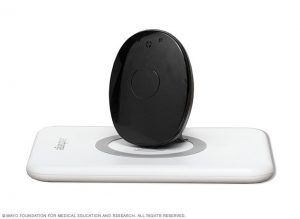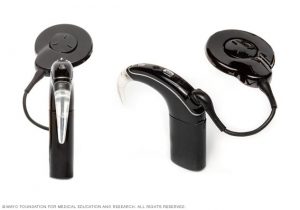Dr. Jain is a board-certified ENT surgeon and has gained ample experience of 11 years in the field of Ear Surgery, and has had a more than 400 ear surgeries to his credit. He does cochlear implant by a minimally-invasive approach called the Veria technique, pioneered by Dr. J.M. Hans in India. He is the promoter of this technique in Singapore, through a paper presentation at the Euroscicon international ENT conference, May 2019.
Why & When ??


Cochlear implants can restore hearing in people with severe hearing loss who are no longer helped by using hearing aids. Cochlear implants can improve their communication and quality of life.
Cochlear implants may be placed in one ear (unilateral) or both ears (bilateral). Cochlear implants in both ears have started to be used more often to treat bilateral severe hearing loss — particularly for infants and children who are learning to speak and process language.
Adults and children( as young as six to 12 months old) can benefit from cochlear implants. People who have cochlear implants report improved:
- Ability to hear speech without needing visual cues such as reading lips
- Recognition of normal, everyday environmental sounds
- Ability to listen in a noisy environment
- Ability to find where sounds are coming from
- Ability to hear television programs, music and telephone conversations
To be eligible for a cochlear implant, you must have:
- Hearing loss that is so severe it interrupts spoken communication
- Limited benefit from hearing aids as determined by specialized hearing tests
- No medical conditions or factors that increase the risks associated with cochlear implants
- High motivation to participate in hearing rehabilitation and be part of the hearing world
- Realistic expectations of what cochlear implants can and can’t do for hearing
Risks & Complications
Complications are very rare and can include:
- Bleeding
- Facial paralysis
- Infection at the surgery site
- Device infection
- Balance problems
- Dizziness
- Taste disturbance
- New or worsened ear noise (tinnitus)
- Spinal fluid leak
How you prepare
Cochlear implant surgery is done under general anesthesia. This means the patient will be in a sleep-like state during the procedure. You or your child might need to:
- Stop taking certain medications or supplements for a certain amount of time
- Avoid eating or drinking for a certain amount of time
Your doctor will give you specific instructions to help you prepare.
What you can expect
Before the procedure
You or your child will need a detailed medical evaluation to determine if cochlear implants are a good option. A doctor will conduct an evaluation that may include:
- Ordering tests of hearing, speech and sometimes balance
- Performing a physical examination to assess your inner ear’s health
- Ordering MRI or CT imaging tests of the skull to assess the condition of the cochlea and inner ear structure
- Ordering mental health (psychological) testing in select cases to determine your ability to learn to use cochlear implants
During the procedure
Your surgeon will make a cut (incision) behind your ear, and form a small hole in the portion of skull bone (mastoid) where the internal device rests.
Your surgeon will then create a small opening in the inside of the ear apparatus in order to thread the electrode of the internal device. The skin incision is stitched closed so that the internal device is under your skin.
After the procedure
You or your child might experience:
- Pressure or discomfort over the implanted ear or ears
- Dizziness or nausea
Most people feel well enough to return home the day of surgery or the next day.
An audiologist won’t turn on (activate) the cochlear implants for about two to six weeks after your surgery — to give the surgery site time to heal.
Activation
To activate the cochlear implant, an audiologist will:
- Adjust the sound processor to fit you or your child
- Check the components of the cochlear implant to make sure they work
- Determine what sounds you or your child hears
- Give you information on the proper care and use of the device
- Set the device so that you can hear to the best of your ability
Rehabilitation
This is the most important aspect. Rehabilitation involves training your brain to understand sounds heard through the cochlear implant. Speech and everyday environmental noises will sound different from what you remember.
Your brain needs time to recognize what these sounds mean. This process is ongoing and is best achieved by wearing the speech processor continuously during waking hours.
Results
For children, the best results generally occur with getting a cochlear implant at a young age.
For adults, the best results are generally associated with a shorter period of profound hearing loss before cochlear implantation. Adults with little or no experience with sound tend to benefit less from cochlear implants.

